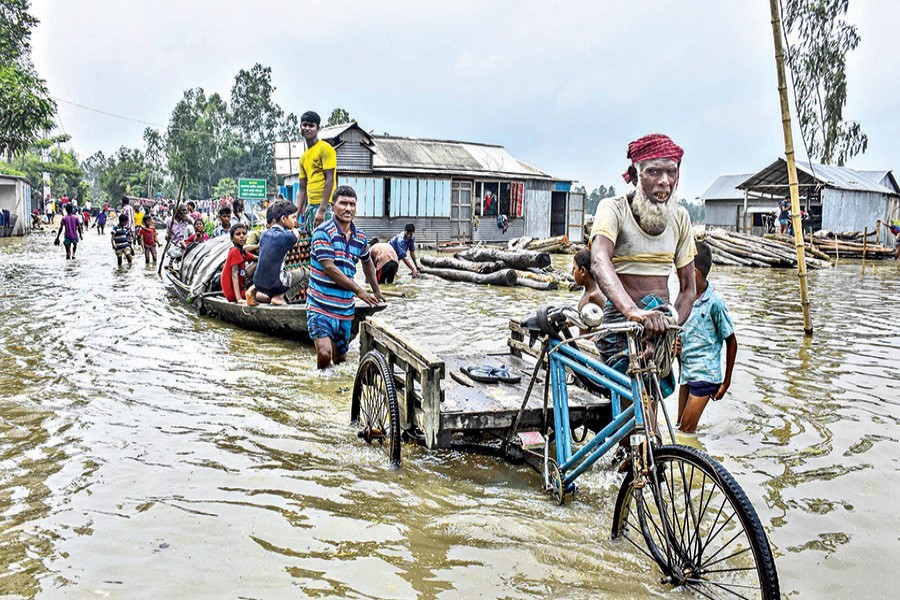Being one of the most climate-vulnerable countries in the world, Bangladesh is going to make compliance with a disaster verification tool mandatory for assessing risks of the development projects across the country, officials said.
It is expected to help check wastage of public money due to the adverse impact of climate change.
The automated tool 'Digital Risk Information Platform (DRIP)' has been developed by the National Resilience Programme (NRP) of the Planning Commission to conduct Disaster Impact Assessment (DIA) in all 64 districts.
On October 6 last, a draft guideline was approved by the Ministry of Planning, aiming to make DRIP verification mandatory in the process of DIA while conducting feasibility studies on the development project proposals (DPPs).
The proposal would be placed in the next meeting of the Executive Committee of the National Economic Council (ECNEC) for approval, officials said.
As per the policy guideline of the Planning Ministry, issued early this year, any of the DPPs exceeding an expenditure of
Tk 500 million needs to go through the DIA on mandatory basis.
The NRP, funded by the United Nations Development Programme (UNDP), has developed the DRIP through detailed mapping of disaster risks in all 64 districts of the country.
In the second phase, the disaster risk assessment for 492 upazilas of the country would be conducted, NRP officials said.
The automated system has been developed so that the government can take development projects like hospitals, schools and other establishments after assessing the risks of disasters or adverse impact of climate change in the concerned areas, they said.
Officials said that every year a number of schools, houses and other important establishments are washed away by river erosion.
Also, cyclones, droughts, floods, deforestation and other risks of climate change are often ignored while preparing the development project proposals by the ministries or departments concerned.
The officials said people of the affected areas raised an allegation that the schools, colleges, hospitals or other major establishments are often constructed hurriedly and intentionally before any election by the members of parliament (MPs) of the concerned area without thinking about its sustainability.
The DRIP is developed by the Center for Environmental and Geographic Information Services (CEGIS) with spending of Tk 8.0 million.
Project director of the NRP Nurun Nahar said that it is important to measure the disaster risks of the development projects.
"Under the project, more manpower would be recruited and the system would be integrated with the Annual Development Programme (ADP)," she said.
The map of disaster risks would be visible in the ADP and environmental hazards would be shown there, she added.
She said climate change adaptation measures, salinity, critical aspects of the construction of roads and other disaster hazard-related information remained missing in many DPP.
Such risks should be identified at the beginning of designing projects for ensuring sustainability, she added.
The NRP project, which was scheduled to expire this month, has been extended until December 2022, said an official.
Iqbal Habib, a renowned architect and environment expert, said the pre-feasibility study of economic and environmental aspects should be made mandatory for some key development projects.
"The development project proposals for educational institutions, health services and roads must contain disaster risk assessment reports prior to its approval," he said.
The government should make it mandatory irrespective of any ceiling of the projects, considering its multiple effects on the vulnerable groups, including women and children, he said.
Even, there must be disaster vulnerability reports before approval of bank loans against any development project, he added.
There is a directive of the National Disaster Management Council (NDMC), headed by the Prime Minister, to include the DIA in the planning process of development projects.
According to a recent multi-agency report coordinated by the World Meteorological Organisation (WMO) and released in October this year, Bangladesh suffered an approximate loss amounting to US$ 11.3 billion last year due to different natural disasters such as floods, droughts and cyclones.


